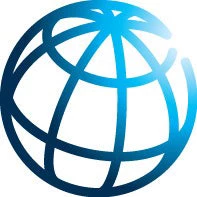In September 2010, the World Bank launched the new web-based World Integrated Trade Solution (WITS) system. The WITS software has been developed by the World Bank, in close collaboration and consultation with various international organizations, including United Nations Conference on Trade and Development (UNCTAD), International Trade Center (ITC), United Nations Statistical Division (UNSD), and World Trade Organization (WTO). The new WITS does not require any installation and can be accessed from wits.worldbank.org/WITS.
WITS is a trade software tool giving access to bilateral trade data between countries based on various product classifications, product details, years, and trade flows. It also contains tariff and non-tariff measures as well as an analysis tool to calculate the effects of tariff reductions. In addition, users can view their data using bubble charts and the map visualizer. “Bubble charts” display data in four dimensions. In each chart, the size of the country circle represents a volume measure, such as population or GDP. The position of the bubbles is determined by the indicators selected for the horizontal and vertical axes. The “map visualizer” animates the export and import trade data from the UNSD COMTRADE database by commodity and partner country from 1988-2008.
The following example uses the bubble chart tool to tell a story.
The trade-to-GDP ratio is a basic indicator of openness to foreign trade and economic integration. It indicates the dependence of domestic producers on foreign demand (exports) and of domestic consumers and producers on foreign supply (imports), relative to the country’s economic size (GDP). A graph that tracks the trade-to-GDP ratio for a country is useful to measure its degree of outward orientation over time. Countries tend to trade more, relative to nominal GDP, as their per capita incomes rise, but at a decreasing rate. However, it is difficult to say whether a country’s ratio is low or high without putting other characteristics in context. All else equal, larger countries in terms of geography and population tend to have a lower trade-to-GDP ratio than smaller countries because they have the option of undertaking a bigger share of trade within their borders. Comparisons are more meaningful, therefore, across countries of similar economic size, population, and geographical size/location (e.g., whether a country is landlocked or a remote island). Comparing the trade-to-GDP ratios of the four emerging developing countries – Brazil, Russia, India, and China -- it is clear that China and India have been integrating into the world economy rapidly since the 1990s. Russia reached its peak trade-to-GDP ratio of over 110 percent in 1992, but the ratio is around 50 percent at present. While acknowledging that large countries like Brazil trade less than what would be predicted for countries at their level of income per person, its trade-to-GDP ratio in 2008 was half of China’s*.
*Source: Waglé, Swarnim. 2010. “Analyzing Trade Outcomes,” International Trade Department, World Bank, mimeo.



Join the Conversation